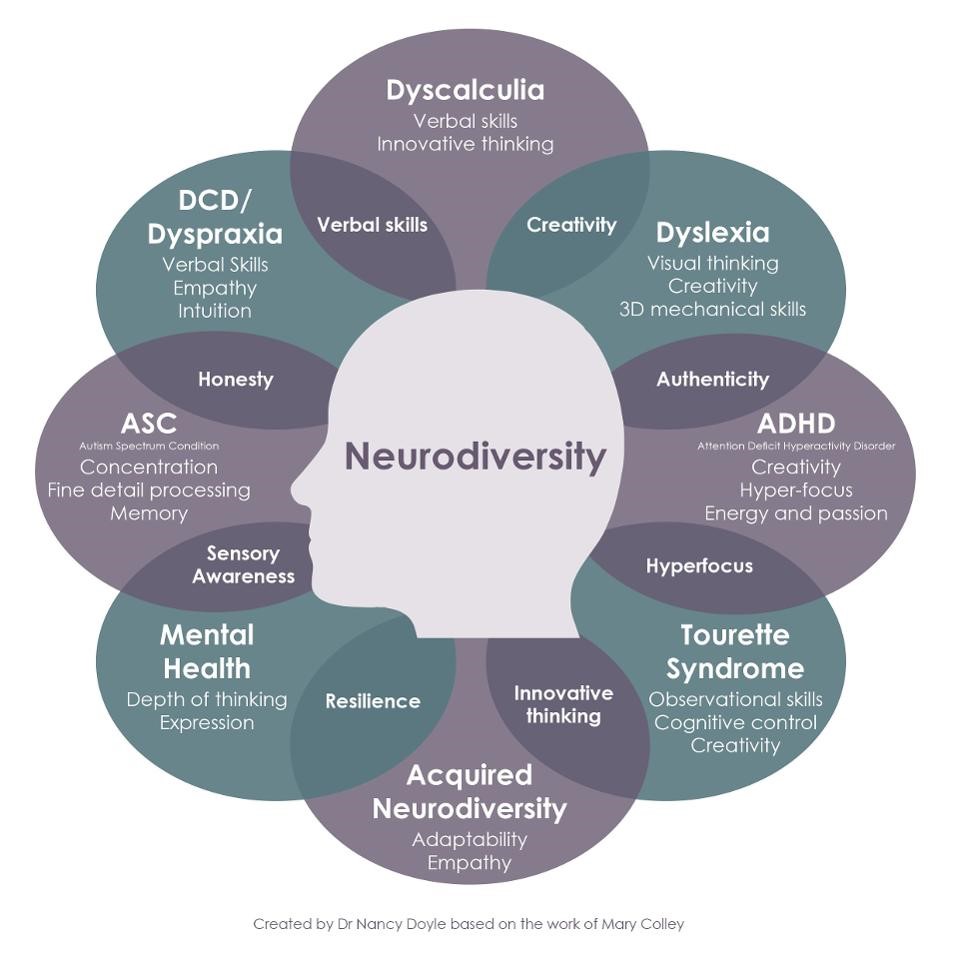Click on one of the following buttons to learn more about the historic category:
ADHD Autism Spectrum Disorder Intellectual {Dis}Abilities Learning {Dis}Abilities
This section of the Inclusive Virginia Adult Education website provides links to information, instructional strategies, resources, and accommodations for adult education practitioners on serving adult learners who are neurodiverse.
Harvard Medical School defines neurodiversity as “the idea that people experience and interact with the world around them in many different ways; there is no one “right” way of thinking, learning, and behaving.” Therefore, the differences in how brains function can be viewed as an asset rather than as a deficit.
The term neurodiversity can include historically named categories such as autism spectrum disorder, learning {dis}abilities, ADHD, dyslexia, and intellectual {dis}abilities. Brain scans of neurodiverse people show that people’s brains are wired differently, specifically those who would be historically categorized as having autism, learning {dis}abilities, ADHD, or intellectual {dis}abilities. While the term neurodiversity was coined by Judy Singer in the 1990s, the movement is relatively new and this term has not made it into law. Therefore, the use of historical categories is important as they provide protection and services under the law (Understood.org).
This article from Mt Holyoke provides some tips for working with neurodiverse learners, such as social grouping, strategies for general instruction, the importance of routines, and tips for reading instruction, note taking, and using manipulatives.

Click on one of the following buttons to learn more about the historic category:
ADHD Autism Spectrum Disorder Intellectual {Dis}Abilities Learning {Dis}Abilities